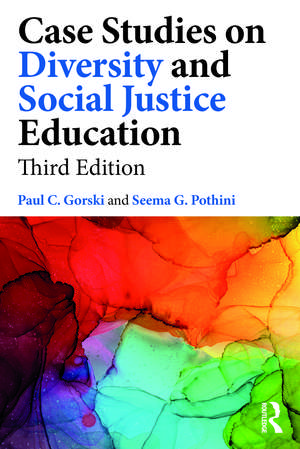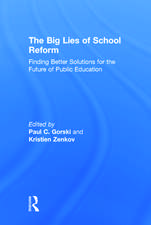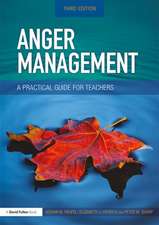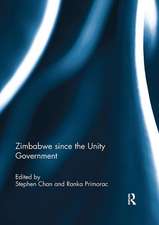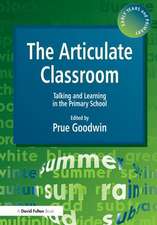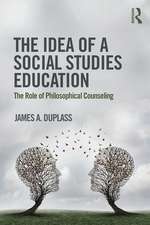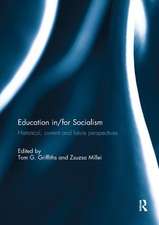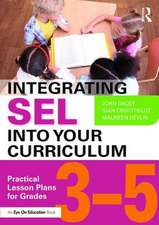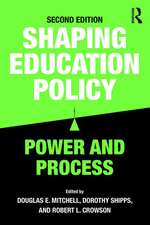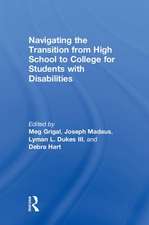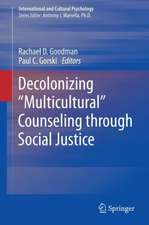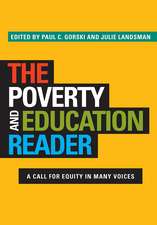Case Studies on Diversity and Social Justice Education: Equity and Social Justice in Education Series
Autor Paul C. Gorski, Seema G. Pothinien Limba Engleză Paperback – 6 feb 2024
Unique to this case study collection is a section of expert insights related to each case and a seven-point process for examining case studies. This framework guides readers through the process of identifying, examining, reflecting on, and taking concrete steps to resolve inequities and injustice in schools. Features of the third edition include:
- Ten new case studies and updates to existing cases that reflect societal contexts
- A series of questions to guide discussions for each case; and
- A section of facilitator notes called "Points for Consideration" that provide valuable insight for understanding how inequity is operating in each case
| Toate formatele și edițiile | Preț | Express |
|---|---|---|
| Paperback (2) | 263.85 lei 3-5 săpt. | +14.14 lei 5-11 zile |
| Taylor & Francis – 6 feb 2024 | 263.85 lei 3-5 săpt. | +14.14 lei 5-11 zile |
| Taylor & Francis – 2 mar 2018 | 309.48 lei 3-5 săpt. | |
| Hardback (1) | 998.26 lei 6-8 săpt. | |
| Taylor & Francis – 6 feb 2024 | 998.26 lei 6-8 săpt. |
Preț: 263.85 lei
Nou
Puncte Express: 396
Preț estimativ în valută:
50.50€ • 54.88$ • 42.45£
50.50€ • 54.88$ • 42.45£
Carte disponibilă
Livrare economică 31 martie-14 aprilie
Livrare express 15-21 martie pentru 24.13 lei
Preluare comenzi: 021 569.72.76
Specificații
ISBN-13: 9781032504209
ISBN-10: 103250420X
Pagini: 166
Ilustrații: 1 Tables, black and white; 1 Halftones, black and white; 1 Illustrations, black and white
Dimensiuni: 152 x 229 x 12 mm
Greutate: 0.23 kg
Ediția:3 ed
Editura: Taylor & Francis
Colecția Routledge
Seria Equity and Social Justice in Education Series
Locul publicării:Oxford, United Kingdom
ISBN-10: 103250420X
Pagini: 166
Ilustrații: 1 Tables, black and white; 1 Halftones, black and white; 1 Illustrations, black and white
Dimensiuni: 152 x 229 x 12 mm
Greutate: 0.23 kg
Ediția:3 ed
Editura: Taylor & Francis
Colecția Routledge
Seria Equity and Social Justice in Education Series
Locul publicării:Oxford, United Kingdom
Public țintă
Academic, Postgraduate, Professional, Professional Practice & Development, and UndergraduateCuprins
Directory of Cases by Topic 1. Introduction 2. Analyzing Cases Using the Equity Literacy Framework 3. Cases on Poverty and Socioeconomic Status 4. Cases on Religion and Faith Identity 5. Cases on Ethnicity and Culture 6. Cases on Race 7. Cases on Sex, Gender Identity, and Gender Expression 8. Cases on Disability 9. Cases on Sexual Orientation 10. Cases on Language 11. Cases on Immigrant Status Appendix A: The Equity Literacy Case Analysis Worksheet Appendix B: Points for Consideration References
Notă biografică
Paul C. Gorski is a long-time educator, busy author, and the founder and lead equity specialist of the Equity Literacy Institute, USA.
Seema G. Pothini is an educator, community organizer, and advisor on equity and diversity, as well as the founder of Equity Elephant Consulting, USA.
Seema G. Pothini is an educator, community organizer, and advisor on equity and diversity, as well as the founder of Equity Elephant Consulting, USA.
Descriere
Case Studies on Diversity and Social Justice Education offers pre- and in-service educators the opportunity to analyze and reflect upon a variety of real-life scenarios related to educational equity and social justice
Recenzii
‘This book is a must for any social justice/equity pedagogy course. I have used the first edition for the past four years and am so pleased to have an update. Using an equity framework, my students develop a lens for detecting inequity as it occurs in everyday classrooms, become adept at looking at the situation from multiple perspectives, and develop actionable plans to negotiate obstacles to equity in the classroom, the school, and in the community. Such a valuable resource!’
—Jacquelynn A. Malloy, Department of Teaching and Learning, Clemson University
‘This case studies book and its pedagogical strategy was a game changer for all of my graduate and undergraduate courses. I can’t imagine teaching without it now! Gorski and Pothini’s second edition updates and extends what was already an essential instructional strategy for teacher education courses and professional development. The case study pedagogy provides the necessary theory to practice critical reflection and application that moves educators from simplistic gut reactions to daily injustices and microaggressions that exacerbate inequities to grappling with complex questions and a range of perspectives and outcomes. By engaging with real cases through a systematic, intentional process of deep examination, discussion, and questioning, students are able to specifically see how privilege and oppression operate in schools and how they can respond. This realization coupled with a framework to process such dilemmas in schools, prepares our students to better advocate for their students and families. I have used the first edition since it was first published and have seen huge growth in my students’ ability to recognize and address the sociocultural context of schools, their own assumptions and biases, and the role that educators play in their sphere of influence to mitigate inequities in their classroom and school.’
—Kara Kavanagh, Assistant Professor in the Department of Early, Elementary, and Reading Education at James Madison University
—Jacquelynn A. Malloy, Department of Teaching and Learning, Clemson University
‘This case studies book and its pedagogical strategy was a game changer for all of my graduate and undergraduate courses. I can’t imagine teaching without it now! Gorski and Pothini’s second edition updates and extends what was already an essential instructional strategy for teacher education courses and professional development. The case study pedagogy provides the necessary theory to practice critical reflection and application that moves educators from simplistic gut reactions to daily injustices and microaggressions that exacerbate inequities to grappling with complex questions and a range of perspectives and outcomes. By engaging with real cases through a systematic, intentional process of deep examination, discussion, and questioning, students are able to specifically see how privilege and oppression operate in schools and how they can respond. This realization coupled with a framework to process such dilemmas in schools, prepares our students to better advocate for their students and families. I have used the first edition since it was first published and have seen huge growth in my students’ ability to recognize and address the sociocultural context of schools, their own assumptions and biases, and the role that educators play in their sphere of influence to mitigate inequities in their classroom and school.’
—Kara Kavanagh, Assistant Professor in the Department of Early, Elementary, and Reading Education at James Madison University
